1
Tinted sketch of Early Peterborough19th Century, Circa 1825
Peterborough, Ontario, Canada
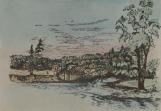 Credits:
Credits:Peterborough Museum and Archives, 1978-012(V2Pg9)
2
'Scott's Plains,' as the early settlement of Peterborough was first known, was named for Adam Scott, who, with his family, was the first to settle in what would later become Peterborough in 1820. Adam Scott and others from Port Hope ventured into the region sometime between 1818 and 1819 with an aim to establish a mill site for a new community. Prior to 1818 settlements north of 'the front' were not yet surveyed.Dr. Hutchison lists the birth of a son to Adam Scott in his Register of Births on September 18, 1818 in Port Hope.
Adam Scott, who was a millwright, constructed a small frame mill measuring 18'x 24' on the banks of the Otonabee river near the corner of King and Water Streets. For a number of years his house, mill, and tiny distillery were the only buildings on the town site.
3
Map of Peterborough surveyed by Richard Birdsall19th Century, Circa 1825
Peterborough, Ontario, Canada
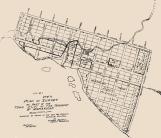 Credits:
Credits:Hutchison House Museum, Peterborough, Ontario, Canada
4
Sketch of Peterborough made with Camera Lucida by Captain Basil Hall, Tinted19th Century, Circa 1827
Peterborough, Ontario, Canada
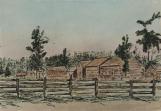 Credits:
Credits:Peterborough Museum and Archives, 1978-012 (V2Pg27)
5
Government House Peterborough19th Century, Circa 1825
Peterborough, Ontario, Canada
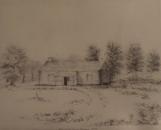 Credits:
Credits:95-1017 Item #6, Trent University Archives
6
The community grew by leaps and bounds with the arrival of 2,024 Irish immigrants under the supervision of Peter Robinson who had been commissioned by the government of the day to bring them to Upper Canada in a bid to open up the 'backwoods' townships.Shortly after his arrival at 'Scott's Plains' Peter Robinson set about the construction of several buildings. They were all built of logs with square gables and shingled roofs.
Four buildings stood in a row in the south east portion of what was to be the market square fronting on Water Street.
The largest and most northern of these buildings measured 18'x 20'. This was the residence of Dr. Reade (Royal Navy Surgeon) who arrived with the immigrant ships. The building also served as a temporary church.
There were two central buildings that served as storehouses for provisions for the immigrants, among other uses.
The fourth building, located nearest the south, housed Mr. Robinson's general office. Here accounts were kept and business was transacted by Robinson and his chief clerk, Richard Thornhill.
A large building measuring 40'x 20' was also built on the southeast side of Simcoe and Water Streets. This was called Government House. It fronted south, with a porch at the door, two windows in front, and three in the back. It consisted of three rooms and served as the living quarters for Peter Robinson, Col. McDonnell, and John Smith, surveyor to the immigrants.
This building had a large fenced garden area and some smaller out-buildings near the river bank.
7
Sketch of Peterborough, Ontario by Miss Haultain19th Century, Circa 1827
Peterborough, Ontario, Canada
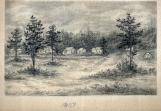 Credits:
Credits:Hutchison House Museum, Peterborough, Ontario, Canada
8
It wasn't long before several new buildings sprung up in the settlement. Most of the early buildings were located in a cluster situated in an area bounded by Water, George, Hunter and King Streets (the heart of modern-day downtown Peterborough).By 1827 the community had been officially renamed Peterborough. At this time there were approximately 40 buildings, and several businesses, including two or three taverns, three stores, a bakery, a shoemaker, a cooper, a fanning mill and a larger, much improved mill erected by the government. Within a couple of years the community also had weekly mail and a post office.
Between 1826 and 1827 the first schoolhouse was erected. It was a log building with a shingled roof built on the rear of the grounds which would later house the Union School. The first teacher was the Reverend Samuel Armour who was also the first Episcopal clergyman in Peterborough. He taught the higher and lower branches of education. When St. John the Evangelist church parish was completed in the 1830s, Reverend Samuel Armour was its first rector.
9
1829 Port Hope, Cobourg to 1830 Peterborough in Dr. Hutchison's Birth Registry19th Century, Circa 1829
Peterborough, Ontario, Canada
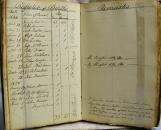 Credits:
Credits:Hutchison House Museum, Peterborough, Ontario
10
Dr. Hutchison relocated to Peterborough in 1830 with his wife Martha and their two childrenWhen they first arrived in the community, the Hutchisons rented Adam Scott's old house on Water St. Adam Scott's wife had died in 1825 and he returned to Port Hope in 1827.
Mr. Scott's house has been described in the history books as a low, square, cottage-roofed building close to the edge of Water Street on the western side. It was an 18'x 20' cabin covered with black-ash bark (located just south of the Empress Gardens on Charlotte St.)
In 1831 daughter Jane Hutchison was born. She only lived to be three years of age.
With a growing family the doctor sought larger and more comfortable accommodation. Apparently he was not satisfied with his living arrangements and even had to borrow one of the government buildings for an office.
It is unclear how long the family lived in the Scott cottage. In Dr. Hutchison's patient ledgers there is an entry dated April 29, 1831 regarding a year's rent at Orton's house up to August 30, 1832. We have not established if Mr. Orton was the owner of the Scott property or if this was another building altogether.
Between 1832 and1836 Dr. Hutchison was assessed as owning a frame house on Sherbrooke St., east of George St. During this time three more children were born. Son John in 1832, Henry in 1834, and George in 1836.
11
A years rent paid to Orton, marked in Dr. Hutchison's Patient Ledgers29 April 1831
Peterborough, Ontario, Canada
 Credits:
Credits:Hutchison House Museum, Peterborough, Ontario, Canada
12
John Hutchison, payment for property on Sherbrooke St., Peterborough24 February 1833
Peterborough, Ontario, Canada
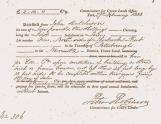 Credits:
Credits:Hutchison House Museum, Peterborough, Ontario, Canada
13
Account for the Building of Hutchison House in Dr. Hutchison's Patient Ledgers6 October 1836
Peterborough, Ontario, Canada
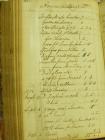 Credits:
Credits:Hutchison House Museum, Peterborough, Ontario, Canada
14
House Building Account and that of DavidTaylor in Dr. Hutchison's Patient Ledger6 October 1836
Peterborough, Ontario, Canada
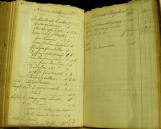 Credits:
Credits:Hutchison House Museum, Peterborough, Ontario, Canada